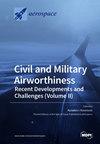研究富含 H2 的条件对源自航空发动机设计的低涡流燃烧器中火焰结构和稳定性的影响
IF 2.2
3区 工程技术
Q2 ENGINEERING, AEROSPACE
引用次数: 0
摘要
本研究介绍了一种创新方法,即在低涡流、非预混合火焰中注入氢气,该火焰使用的气体燃料来自为航空发动机应用而设计的喷气雾化器。其目的是在保持 4.6 千瓦恒定热输出的同时,确定氢富集如何影响火焰结构。利用高速化学发光成像技术,对三种燃料条件进行了比较:第一种条件是纯甲烷/空气,第二和第三种条件是在空气-甲烷混合物中引入不同水平的氢。结果表明,氢气富集对火焰特性有明显影响,包括长度略短,角度更宽,这归因于燃烧再循环区内膨胀加剧。此外,紫外光的发射也发生了很大变化,导致发光区偏移和方差减小。为了深入研究其潜在机制,研究人员采用了正交适当分解(POD)和光谱适当正交分解(SPOD)分析,显示了火焰内部的相干结构和能量模式。氢气富集导致喷嘴出口附近出现较小的结构,并伴有纵向振荡和涡流脱落现象。这些发现有助于进一步了解氢气对火焰特性的影响,从而推动提高火焰稳定性的工作。此外,这些见解对于探索氢作为一种具有潜在环境效益的替代能源也具有重要意义。本文章由计算机程序翻译,如有差异,请以英文原文为准。
Investigation into the Effect of H2-Enriched Conditions on the Structure and Stability of Flames in a Low-Swirl Combustor Derived from Aero-Engine Design
This study introduces an innovative approach involving the injection of hydrogen into a low-swirl, non-premixed flame, which operates with gaseous fuels derived from an air-blast atomizer designed for aero-engine applications. The aim is to characterize how hydrogen enrichment influences flame structures while maintaining a constant thermal output of 4.6 kW. Using high-speed chemiluminescence imaging, three fueling conditions were compared: the first involved pure methane/air, while the second and third conditions introduced varying levels of hydrogen to an air–methane mixture. The results reveal significant effects of hydrogen enrichment on flame characteristics, including a slightly shorter length and a wider angle attributed to heightened expansion within the Combustion Recirculation Zone. Moreover, the emission of UV light underwent considerable changes, resulting in a shifted luminosity zone and reduced variance. To delve deeper into the underlying mechanisms, the researchers employed Proper Orthogonal Decomposition (POD) and Spectral Proper Orthogonal Decomposition (SPOD) analyses, showing coherent structures and energetic modes within the flames. Hydrogen enrichment led to the development of smaller structures near the nozzle exit, accompanied by longitudinal oscillations and vortex shedding phenomena. These findings contribute to an advanced understanding of hydrogen’s impact on flame characteristics, thereby propelling efforts toward improved flame stability. Additionally, these insights hold significance in the exploration of hydrogen as an alternative energy source with potential environmental benefits.
求助全文
通过发布文献求助,成功后即可免费获取论文全文。
去求助
来源期刊

Aerospace
ENGINEERING, AEROSPACE-
CiteScore
3.40
自引率
23.10%
发文量
661
审稿时长
6 weeks
期刊介绍:
Aerospace is a multidisciplinary science inviting submissions on, but not limited to, the following subject areas: aerodynamics computational fluid dynamics fluid-structure interaction flight mechanics plasmas research instrumentation test facilities environment material science structural analysis thermophysics and heat transfer thermal-structure interaction aeroacoustics optics electromagnetism and radar propulsion power generation and conversion fuels and propellants combustion multidisciplinary design optimization software engineering data analysis signal and image processing artificial intelligence aerospace vehicles'' operation, control and maintenance risk and reliability human factors human-automation interaction airline operations and management air traffic management airport design meteorology space exploration multi-physics interaction.
 求助内容:
求助内容: 应助结果提醒方式:
应助结果提醒方式:


